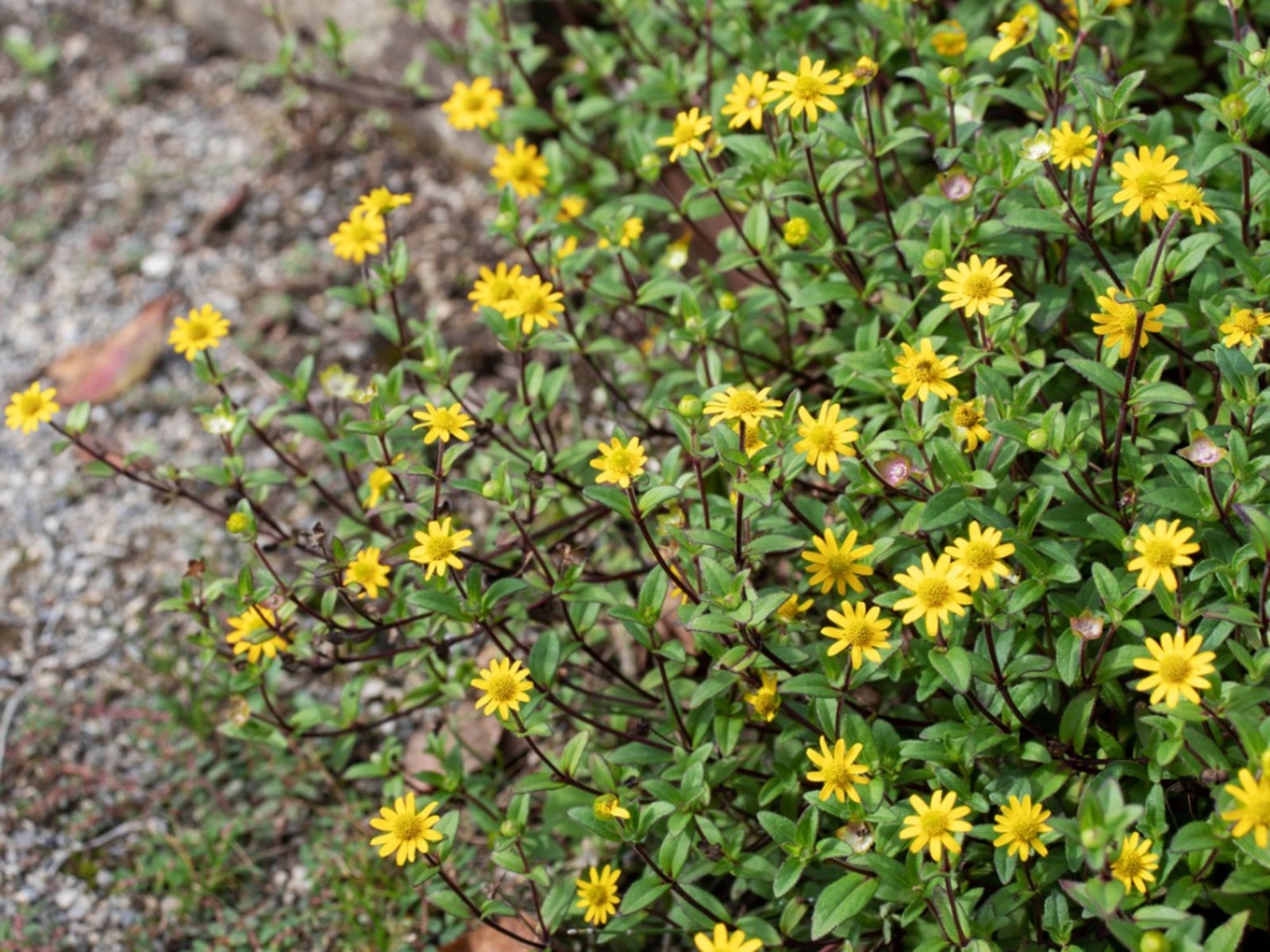Creeping Zinnia Ground Cover: Growing Creeping Zinnia Plants

Gardeners delight in easy to care for and beautiful ground covers that they can just plug in and let go. Creeping zinnia (Sanvitalia procumbens) is one of these garden favorites that, once planted, provides a feast of color all season long. This low-growing beauty has a dainty trailing habit, which makes it perfect for hanging baskets and container arrangements as well. Keep reading to learn more about creeping zinnia ground cover plants.
Growing Creeping Zinnia Plants
Use creeping zinnia in the garden if you have a sunny spot with well-drained soil that needs some color. Where summers are mild, this Mexican native will spread up to 18 inches (45 cm.) and bear beautiful little orange or yellow sunflower-like flowers from summer through fall. Creeping zinnia ground cover does best when sown in a sunny garden spot in early spring. Use light, loamy potting soil with plenty of drainage if using the plant in a container garden. Many people start creeping zinnia ground cover seeds in hanging baskets or containers indoors, about four to six weeks before spring, to get a jump-start on the season. Sow seeds on top of a prepared planting surface and cover lightly with peat moss for best results. Keep seeds evenly moist until you see sprouts emerge, which should be sometime within a couple weeks.
Creeping Zinnia Care
Once creeping zinnia in the garden is well established, their care is minimal. Fertilize growing creeping zinnia plants monthly during the growing season with a water-soluble fertilizer. Creeping zinnias are drought, humidity and heat tolerant and should not be overwatered. If you are using creeping zinnias in a container or hanging basket, be sure to provide a little extra water, as needed since pots tend to dry out quickly. There are no major pests associated with growing creeping zinnia plants.
Gardening tips, videos, info and more delivered right to your inbox!
Sign up for the Gardening Know How newsletter today and receive a free copy of our e-book "How to Grow Delicious Tomatoes".
-
 Looking For Plants To Give You The Soft And Fuzzies? Try These 5 Fuzzy Leaf Plant Options
Looking For Plants To Give You The Soft And Fuzzies? Try These 5 Fuzzy Leaf Plant OptionsLovers of texture, drama, silver foliage and tactile plants will adore these special sensory garden additions. These fuzzy leaf plant options will leave you all aglow
By Susan Albert
-
 Get Ready For A Summer Of Hummers! Grow These Full Sun Hummingbird Plants and Flowers
Get Ready For A Summer Of Hummers! Grow These Full Sun Hummingbird Plants and FlowersIf you’re lucky enough to enjoy a sunny backyard, make sure you are maxing out on your pollinator opportunities and grow these full sun hummingbird plants and flowers
By Tonya Barnett